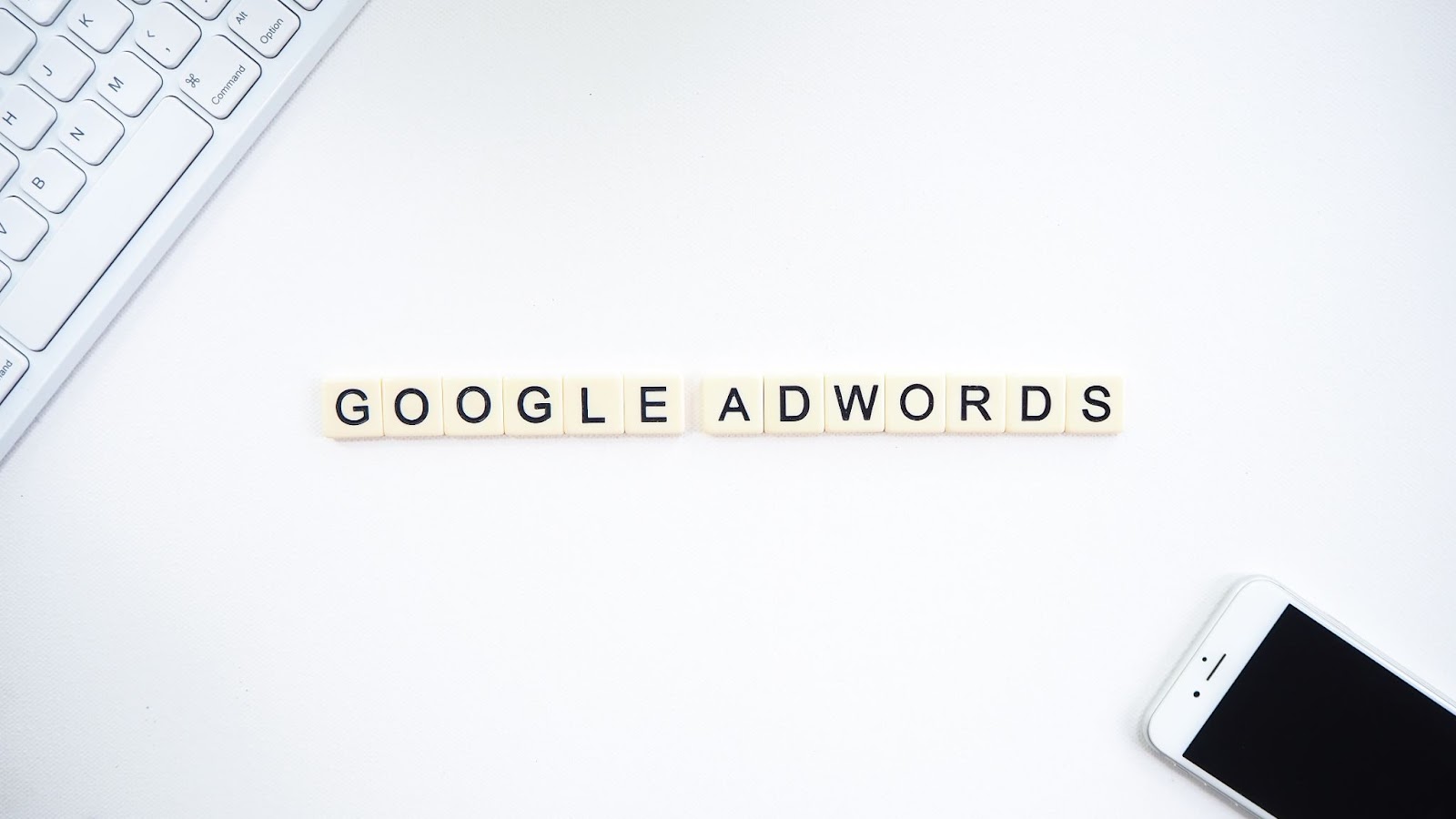Your Google Ad copy is an essential component of your Google Ads campaign. It is the primary impression of your business that a customer will perceive and a crucial part of your marketing message.
Therefore, it’s vital to understand the makeup of an excellent Google Ad copy. This way, you can put a strategy in place to consistently write copies that get your business 2X CTR and 10X ACOS. But Google has a very diverse ad copy configuration. They have different types of ads targeting different audiences. They also allow a variety of ad formats that can be used to reach prospects effectively.

Photo by Launchpresso on Unsplash
This marketing guide will provide you with nine valuable strategies for creating excellent Google Ad copies. Since different ad types target different audiences, these strategies vary to cover the various ad types.
Let’s get started.
1. Focus on Improving Your Quality Score
Quality score is a metric of utmost importance to your Google Ad copy. It’s the number that determines whether your ads will show up on Google or not. This is why it’s essential to make sure that your ad copy has a high-quality score.
An ad’s quality score is calculated by analyzing its text and content, including the headline’s length, body text, and URL. The higher the quality score, the higher ranking your ad will get along with more clicks and conversions.
To improve your quality score, you should keep these tips in mind:
- Write concisely: The shorter your ad text, the better it will perform in CTR (click-through rate). People don’t have much time when they’re searching for a product or service on Google, so make sure your ad is short and sweet.
- Use keywords where applicable: Keywords are crucial for any search engine optimization strategy. They help generate traffic to your website from organic search engines like Google.
- Make your headline stand out: Your headline should be the first thing that online visitors notice seeing your ad, so it needs to stand out from other ads on the search results page.
2. Leverage Top Ad Extensions

Photo by Edho Pratama on Unsplash
Ad extensions are a set of tools the advertising industry provides to help brands create more relevant ads during the writing process. To this end, using ad extensions to mirror the user’s goal during Ad copywriting is one of the most effective methods to deploy.
They help marketers create interactive ads embedded in websites, apps, and other digital platforms. They also provide a range of creative options such as video, audio, animation, and more.
This list is not all-inclusive, but it does highlight some of the best ad extensions that you can use for Google ad copy.
Sitelink Ad Extensions
This additional line of text is shown to your audience each time your ads are among the first three on SERPs. They bear a close resemblance to organic search sitelinks.
Call Extensions
With call extensions, your adverts become easier to use for contacting your business since this extension adds a number to your ads. If your business’s sales process relies heavily on customer calls, call extensions are worth checking out.
Promotion Extensions
Promotion extensions enable you to be in the spotlight on special offers or deals placed below the actual ad copy. There exist four types, namely:
- Percent discount
- Money discount
- Up to monetary discount
- Up to percentage discount
Price Extensions
Price extensions are direct links to a dedicated product page within your advertisement. They usually display different pricing tiers or different service plans of a business. Adding a price extension can also boost your Quality Score and click-through rate.
Apart from these four, other extensions include callout, location, lead form, and app extensions. Feel free to use them per your advertising objectives.
3. Test Ads of Different Types
It is crucial to test different ads to determine which one is the best for your business. You can run A/B tests or split tests to determine which ad works better for you.
Some various ad types are:
– Display Ads: These ads show up when a user clicks on your website search engine results, sponsored posts, and other places where people are looking for information.
– Native Ads: These ads appear in the same space as other content on your site and are not shown due to someone clicking on your website search engine results.
– Video Ads: These ads show up before or after a video play when someone watches YouTube videos or other videos online.
You can assess the effectiveness of separate ads by using real-time bidding software. This software allows you to compare the CTR of your ad with other similar ads in your market. To ensure that they get a good CTR, marketers need to understand how their competitors are advertising and what they are doing right or wrong.
The information gathered from competitors will also inform how you craft the copy for your ads. However, you’ll need a systematic approach.
4. Use Spyfu to Scan Competitor Ad Copy

Photo by Myriam Jessier on Unspash
Spyfu is a powerful tool that helps you monitor your competitors’ ads and learn about their strategies. It offers a data-driven approach to competitive intelligence and marketing research. You can use it to find out what your competitors are doing, how they are doing it, and what you should do next.
First, to use Spyfu, you need to install it on your computer or mobile device. It also has a Chrome extension that makes it easy to analyze competitor Ad content without leaving your browser. However, you’ll need to create an account with Spyfu and enter the URL of the competitor’s website. After that, Spyfu will monitor their Ad copy for specific keywords and phrases.
As part of the regular monitoring process, you can use this tool to find similar keywords and phrases highly relevant to your Ad. Furthermore, it can also enable you to identify the analytics and key performance indicators of your site’s content.
This way, you’ll be able to see which keywords and phrases are converting the best and ensure that your ad is optimized for conversions.
5. Tweet And Test Your Ad Headlines
Many people don’t realize how important the headline is for an ad. It’s the first noticeable thing from a potential buyer’s point of view, and it sets the tone for what they might expect from your company.
It helps create an outstanding first impression, leading to a sale in the long run. Writing great headlines takes time, effort, and creativity. However, you can save yourself time and money by starting on the right foot. This is the use of tools like AdWords, which provide suggestions for ad headlines.
However, these are just that – suggestions. Therefore, you need to improve them and tailor them to fit your marketing objective, audience, and brand voice.
As you already guessed, the idea is to write multiple headlines for a single ad. Then you need to test each one. This will help you find out which one performs better than the others so that you can use it in your next campaign.
Doing this will also help you find a headline that will resonate with your audience and boost conversion rates for your ads. While you’re at it, it’s also helpful to add dynamic keyword insertion (DKI) within your headline to increase the relevance of your ad campaigns to more search queries.
6. Split Test Ad Copy
Many businesses attempt to leverage the testing features of Google Ads to their advantage. This is not a new practice. However, with the increasing sophistication of Google’s tools, you can take full advantage of experiments in your campaigns.
Thanks to these tools, it is now easier to conduct these experiments and split tests. The key to success with these experiments is having a clear idea of what you want your ad copy to do. For example, if you wish your ad copy to generate leads for your business, you should ensure that the ad has a call-to-action that will entice people to click on it.
Ultimately, these tests allow you to access the performance of different combinations of elements, such as visuals, text, and calls-to-action, finding the ones that get the best response from your audience and generate the most leads.
After your test runs for the needed amount of time, it’s okay to pause the least converting ads, craft new variations and repeat the split test all over. Remember, you don’t want too many keywords in your ad group, so switching off the least converting ads after creating new ads is a crucial step.
Why?
Too many ads mean lower ad relevance, and your CTR will take a nosedive.
7. Avoid Industry Jargon But Backup Every Claim
No doubt you’re an expert. However, your ad copy isn’t the place to flex your muscles of expertise. So, you don’t want to sound like an expert. Instead, you want to speak with the clarity of a native speaker, so you must avoid industry jargon and write in layman’s terms.
This is a simple and easy rule to follow.
When you are trying to write a commercial ad, you want to ensure that your audience understands what you are trying to say. As such, industry jargon can be tricky to understand for the audience. It can also lead to the audience feeling alienated or confused if they don’t understand what you are talking about.
If you want your ad copy to be understood, use everyday language and make sure that you back up your claims with evidence. So always use concise and straightforward language. This prevents any confusion, which will only serve as barriers that prevent your audience from taking the desired action, reducing your CTR.
8. Mention Pricing in Ad Copy

Photo by Myriam Jessier on Unsplash
Pricing is a key factor in getting a higher CTR. Yet, this part is perhaps the easiest part of the ad copy to get wrong simply because it can be challenging to incorporate into the rest of the copy.
A study by ad tech company Kenshoo found that pricing is a critical factor in CTR (click-through rate) for ads. The study found that if an ad included the word “free” in its headline, it had a CTR of 0%. However, if the price was highlighted in the headline with “$5 off” or “$10 off,” it had a CTR of 8%.
This is because it is easier for people to compare prices when highlighted. They can also see how much they will save. The most common way of highlighting the price is by using a bold font. However, this may not be effective if you have small text or short titles.
Nevertheless, it renders your offers easier for people to notice, increasing their chances of clicking your ad and making a purchase.
9. Create Closely Knitted Keyword Groups
The Google Ads Interface is set up in such a way that encourages marketers to add many keywords to your campaign, Ad Groups, and account. But a common mistake that many people make is to focus on one keyword in their ad copy.
So, you should not just use one keyword in your ad copy but instead use a combination of words that will be more relevant and targeted to your audience.
However, there’s an issue that accompanies using a large number of keywords. As most businesses later find out, when one Ad Group has one too many keywords, this affects the relationship between the keywords of each ad group and the actual ad text.
When users search for a term that belongs to your ad group with over 20 keywords, the displayed ads are unlikely to include the exact keyword in their search query. Consequently, this will adversely affect your keyword, ad click-through rate, and quality ratings.
To prevent this, simply group closely related keywords into smaller subgroups instead of having many keywords into one ad group.
Conclusion
When it comes to attracting high-quality visitors, your marketing message is critical. Hence, optimizing the wording of your ad before publishing is an excellent place to start if you wish to increase the success of your ad campaigns, no matter the ad network.
The nine ad copy strategies provided in this guide should be more than enough to assist you in crafting enticing ad copy which persuades your prospects and boosts your return on investment.